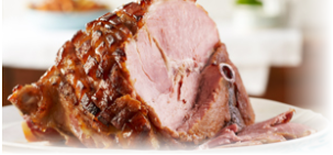HAM; NOT JUST FOR HOLIDAYS.
Serving size
Bone in hams whole or half 1lb per person
Boneless hams whole or portion ½ – ¾ pound per person
Cooking times and or Heating times
Bone in hams 15-20 minutes per pound, covered until last 30-40 minutes to brown
Boneless hams 12-15 minutes per pound*, covered until last 15-20 minutes to brown.
*Most small boneless hams are very lean and will dry out if left uncovered too long while cooking.

